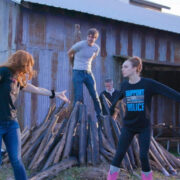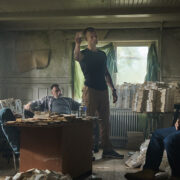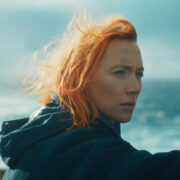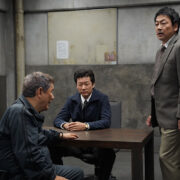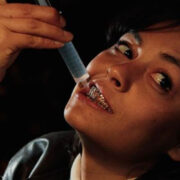THE SILENCE OF THE LAMBS: Why “The Lambs” Won’t Stop Screaming
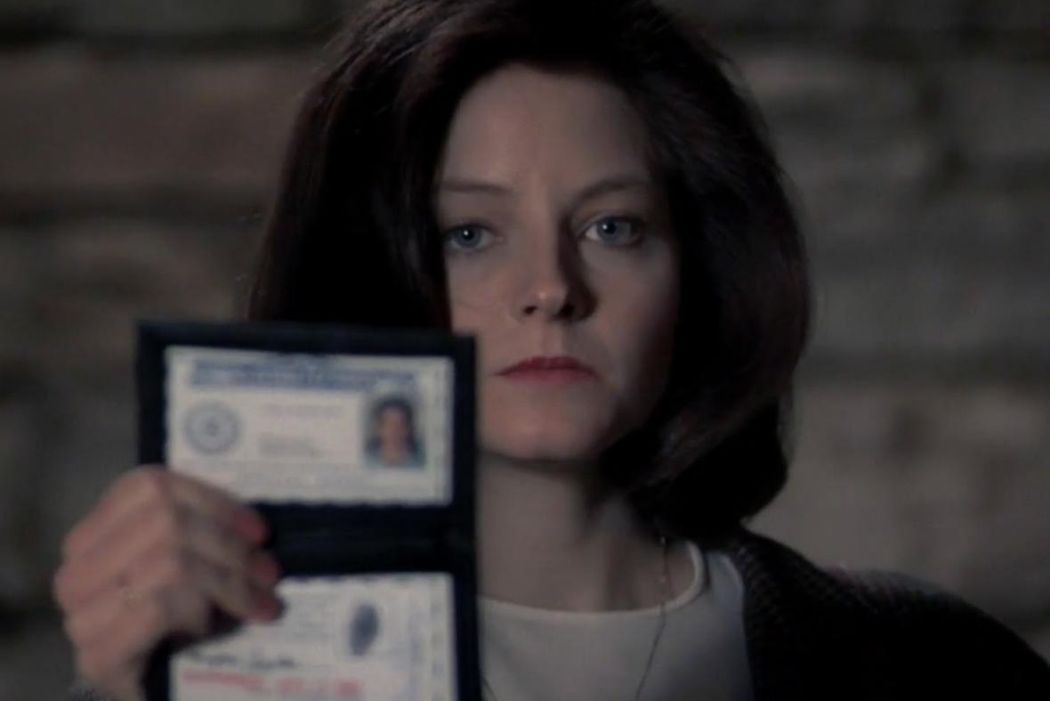
Smith-Rowsey is author of "The Netflix Effect," "Star Actors in…
As we mourn the tragic, early passing of director Jonathan Demme, we pause to note that the considerable influence of his best-known film, Silence of the Lambs being only the third and most recent film to “sweep” the Oscars by winning in the ostensible “Top Five” categories – Best Picture, Best Director, Best Actor, Best Actress, and Best Screenplay.
Remarkably, it accomplished this Oscar sweep more than a year after its release date. Of the 1990s’ five most influential films – the others being Terminator 2, Jurassic Park, Toy Story, and The Matrix – The Silence of the Lambs probably holds up the best, and is still influential to this day. Here are ten ways the film still exerts its influence today.
Casting
Imagine Sean Connery as Hannibal and Michelle Pfeiffer as Clarice. These were Demme’s first choices; they, and later Meg Ryan, turned down the script for being too lurid and disgusting. Such a film might have been remembered as just another flashy cop thriller today. Demme once spoke of his reluctance to cast Foster, “she’s such a California person… I didn’t believe her Boston accent [in The Accused]. I saw her ‘acting’ all over the place and I wasn’t impressed.”
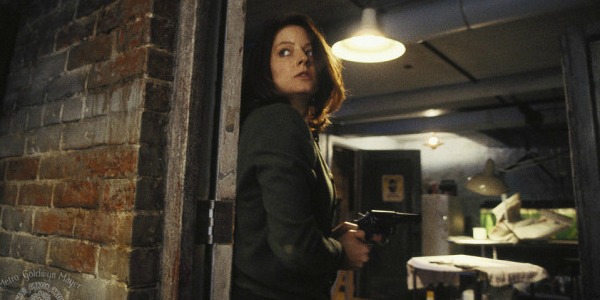
But Foster campaigned for and won the role. Demme was smart enough to cast an equally gifted thespian, Anthony Hopkins, as her opposite, and then draw out (or get out of the way of) their sophisticated, nuanced performances in The Silence of the Lambs that have influenced scores of great actors in the 26 years since.
Technique
Never underestimate the power of a well-made film in a genre not known for well-made films. The Silence of the Lambs was an upscale horror film (not unlike Jaws) that made horror, well, less horrible for filmmakers. Yet many would say it was often imitated, never equaled: filmmakers who pitched studios “the next Silence of the Lambs” found it hard to replicate Demme’s combination of subtle iconography and naturalism.
You can watch the film ten times without really catching the motif of birds, which goes way beyond the name “Starling”: the careful observer a runaway crow in the opening shot, a stuffed owl in the Baltimore storage facility, pigeons in Catherine’s photos, and the crucial pivot “it’ll be terns for us too.” Yet Demme also told his longtime cinematographer Tak Fujimoto that he wanted to avoid lengthy shadows and generally present Clarice’s world as realistically as possible.
Traveling to The Silence of the Lambs truly feels like journeying through Maryland, West Virginia and the Ohio River area in winter: muted, never over-bleached tones, wet-but-dull leaves and branches. Despite the melodrama surrounding Clarice’s personal journey (so evocatively summarized by the story’s title), the viewer always feels like the story could happen to him, her, anyone. This was influential, but arguably not influential enough: many wannabe Silences were over-loud.
Feminism
Speaking of silence, Demme and Foster were entirely silent on the film’s extensive DVD commentary, probably reflecting their avoiding the painful LGBT-versus-feminists battles that accompanied the film’s success. They would never say the following, so I’ll say it for them: The Silence of the Lambs is one of the most feminist blockbusters of the post-Star Wars period.
In this very rare rites-of-passage film with a female protagonist, Clarice Starling works to save women from a male serial killer’s unthinkable violence. The film never objectifies her – never lingers on her legs or presents her in any state of undress. (If anything, her clothes are frumpy, as Lecter points out.) Almost every male character in the film could be said to “hit on” Clarice, but she deflects their attention and focuses on the task at hand, not needing a man to make her life complete.
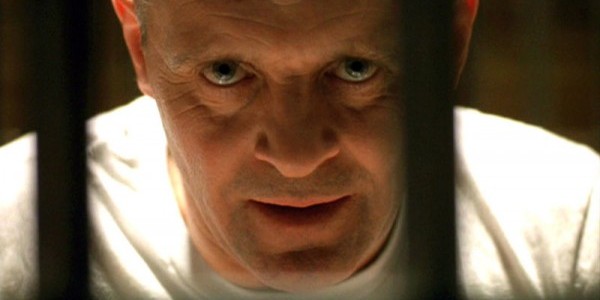
Clarice’s “relationship” with Hannibal is no exception, but instead the leading example of her focus: she needs him exactly to the extent that he can help her find Buffalo Bill, not an iota more. Her scenes with him feel like a familiar nightmare for women, including those not tracking serial killers. When Starling must upbraid her boss, Jack Crawford, because Crawford made it look to other male officers as though she couldn’t handle a murder case’s graphic details, she says, “It matters, Mr. Crawford. Cops look at you to see how to act. It matters.” Foster’s strength and vulnerability sell the film’s feminism well, a crucial aspect of the Silence of the Lambs legacy.
More, Better Female Detectives in Movies
In “Detecting Women: Gender and the Hollywood Detective Film,” Philippa Gates itemizes cinema’s crime-stopping women since the early silent era, and she writes, “the only prominent female detective-figure in the 1980s was the lawyer and…she was the product of male anxieties resulting in a seemingly feminist, while simultaneously reactionary, image of female empowerment.”
At a time when every studio was making ripoffs of Fatal Attraction (a field Demi Moore was claiming as her own), The Silence of the Lambs pushed the female-led thriller toward something more feminist. Its five Oscars served as a remarkable curtain call for a cinematic year (1991) of strong women packing guns: Thelma and Louise, La Femme Nikita (released in the U.S. in 1991), Sleeping with the Enemy, V.I. Warshawski, and Terminator 2.
These, like Silence, celebrated their lead female knowing more than the patriarchal males who run her world. Successors, including those starring Hannibal Lecter, had a lot to live up to, and several of them did, like The Client, Copycat, Kiss the Girls, Out of Sight, and The Cell. Yet few of them would, as Silence of the Lambs had, permit their lead female to work alone.
More, Better Female Detectives on TV
Perhaps TV was better disposed to produce Clarice Starlings than the movies. One might argue that Orion’s Cagney and Lacey had already broken the mold in the 1980s, but after (Orion’s) The Silence of the Lambs, kick-ass female cops became a lot more frequent, on shows like Prime Suspect, The X-Files, Law and Order, Law and Order: SVU, CSI, Veronica Mars, Medium, Rizzoli and Isles, and Jessica Jones.
Also, Patricia Cornwall introduced her serial killer-hunting sleuth Kay Scarpetta in the book “Postmortem” just before the release of Silence of the Lambs, and stories featuring Scarpetta have been selling briskly ever since.
Fetishizing Forensics
The Silence of the Lambs mainstreamed the intricate forensic investigation on both the big and the small screen. No previous blockbuster had featured a naked, lacerated corpse of a woman on a slab, but the image doesn’t really feel out of place, because as Yvonne Tasker put it, Starling’s “emotional response goes beyond disgust [and] involves the intensity of empathy,” partly through her “display of forensic knowledge.”
From dirty fingernails to moth’s-heads to human heads in jars, Silence of the Lambs confidently put detailed forensics at center stage, and prompted future TV shows and movies to more prominently feature analyses of bones, fibers, fingerprints, body fluids, weapons, shells, weapon discharges, tire tracks, and the like.
Why We Love Psychopaths
The American Film Institute ranks Hannibal Lecter #1 on a list of 100 movie villains, perhaps owing to Lecter’s elaborate courtesy combined with his hatred of authority. David Bordwell, oft-quoted film historian, wrote in 2008, “Horror and comic-book movies offer ripe opportunities for this sort of masquerade. In a straight drama, confined by realism, you usually can’t go over the top, but given the role of Hannibal Lector [sic], there is no top.”

Yet neither of these sources, never mind most critics, truly gets the appeal of the film’s charming psychopath beyond Hopkins’ outstanding performance and Demme’s empathetic direction: Hannibal symbolizes a certain wish fulfillment for over-educated, under-appreciated white men who feel as though they’re in a cage as smarter women advance.
A young, clever, hardly unattractive woman desperately needs their counsel and help, and they twist this for their own pathological “quid pro quo.” If, as Bordwell suggests, 21st-century comic-book villains owe Hopkins’ Lecter a debt, it’s partly because the angry, forced-obsolete white man has hardly become less relevant in the years since.
More Macabre Movies
Anyone who loves The Silence of the Lambs knows that that love comes with at least one catch: it mainstreamed a certain fascination with the sickest sort of American crimes. In this, it was joined by the 1990-released film Henry: Portrait of a Serial Killer and Bret Easton Ellis’ 1991 book “American Psycho,” but Silence of the Lambs was experienced by more than 50 times as many Americans.
Silence put the grime back in crime, unfortunately leading to far more pulpy, exploitative thrillers. For every excellent descendant like Se7en, there were many more that existed only to punish women, or to punish the audience for its most gruesome fantasies. Watching Silence after seeing its more repulsive cousins really makes one appreciate the careful work that Jonathan Demme did to elevate the horror-ific material to something more universal…and perhaps speculate, even just for a moment, that Connery and Pfeiffer were right and the film shouldn’t have been made at all.
Spurring Better LGBT Representation
Anyone who loves The Silence of the Lambs knows that that love comes with at least one other catch: the portrayal of Jame Gumb, a.k.a. Buffalo Bill, relies upon and reifies horrible prejudices about “swishy” and transgender people. Stephen Harvey wrote in The Village Voice, “Should this movie incite some credulous homophobe out there in the dark to work out his problem in the streets, Lecter and Gumb won’t be the only ones with blood on their hands.”
In Harvey’s defense, in 1991 the LGBT community was very rightly frustrated with national indifference, and sometimes hostility, to the ongoing scourge of HIV/AIDS. Silence of the Lambs, and chants like “No more Buffalo Bills!”, served as a useful catalyst to the new queer cinema of the time, but its influence wasn’t limited to arthouse fare.

Jonathan Demme felt pained by the criticism, and spent his Oscar capital making the big-budget Philadelphia (1993). That’s worth restating: a filmmaker heard criticism from an entire community, and used his next movie to portray that community with considerable empathy. Would that every filmmaker would heed that lesson.
Philadelphia
If one considers Philadelphia part of the legacy of The Silence of the Lambs (and I clearly do), then consider the legacy of Philadelphia: representing LGBT people and AIDS in a mainstream movie, showing an LGBT victim with a loving, sympathetic family, cementing Tom Hanks as America’s favorite everyman star (this was unclear during the first Bush administration, when he made the less-well-received Turner and Hooch and The Burbs), squelching the old logic that playing gay kills your career, and making a star of Antonio Banderas.
If, as many claim (like Harvard’s Alvin Poussaint), The Cosby Show laid the groundwork for (most of) America’s acceptance of Barack Obama, then one can also say that Philadelphia laid the groundwork for the black community-LGBT community rapprochement that only occurred in May 2012, when Obama verbally committed himself to it. Would that every pair of studio films approached such a legacy.
To Conclude
People should remember Jonathan Demme for far more than The Silence of the Lambs. But if they only know that one film of his, they know that it doesn’t exactly play like most of the films that they see next to it on a (virtual) shelf. That uniqueness is a key to understanding the rest of Demme’s oeuvre; most directors don’t demonstrate Demme’s understanding of the humanity behind their characters. No villain sees himself as a villain, but too many films do see their villains that way. No hero sees herself as only heroic, but too many films do see their heroes that way. Because of Demme’s care, a potentially two-dimensional hero and villain (as they arguably became in the sequel, Hannibal), seem almost more three-dimensional than we do. Decades later, even as we release our tension by joking about “fava beans” and the like, Clarice and Hannibal remind us of the physical, emotional, and moral cost of heroism and villainy in a modern world. If Demme had done nothing else with his life, this would have been enough.
Does content like this matter to you?
Become a Member and support film journalism. Unlock access to all of Film Inquiry`s great articles. Join a community of like-minded readers who are passionate about cinema - get access to our private members Network, give back to independent filmmakers, and more.
Smith-Rowsey is author of "The Netflix Effect," "Star Actors in the Hollywood Renaissance," and many articles about cinema, media, and all that jazz. He also teaches, blogs, makes films, and writes songs that become music videos.




